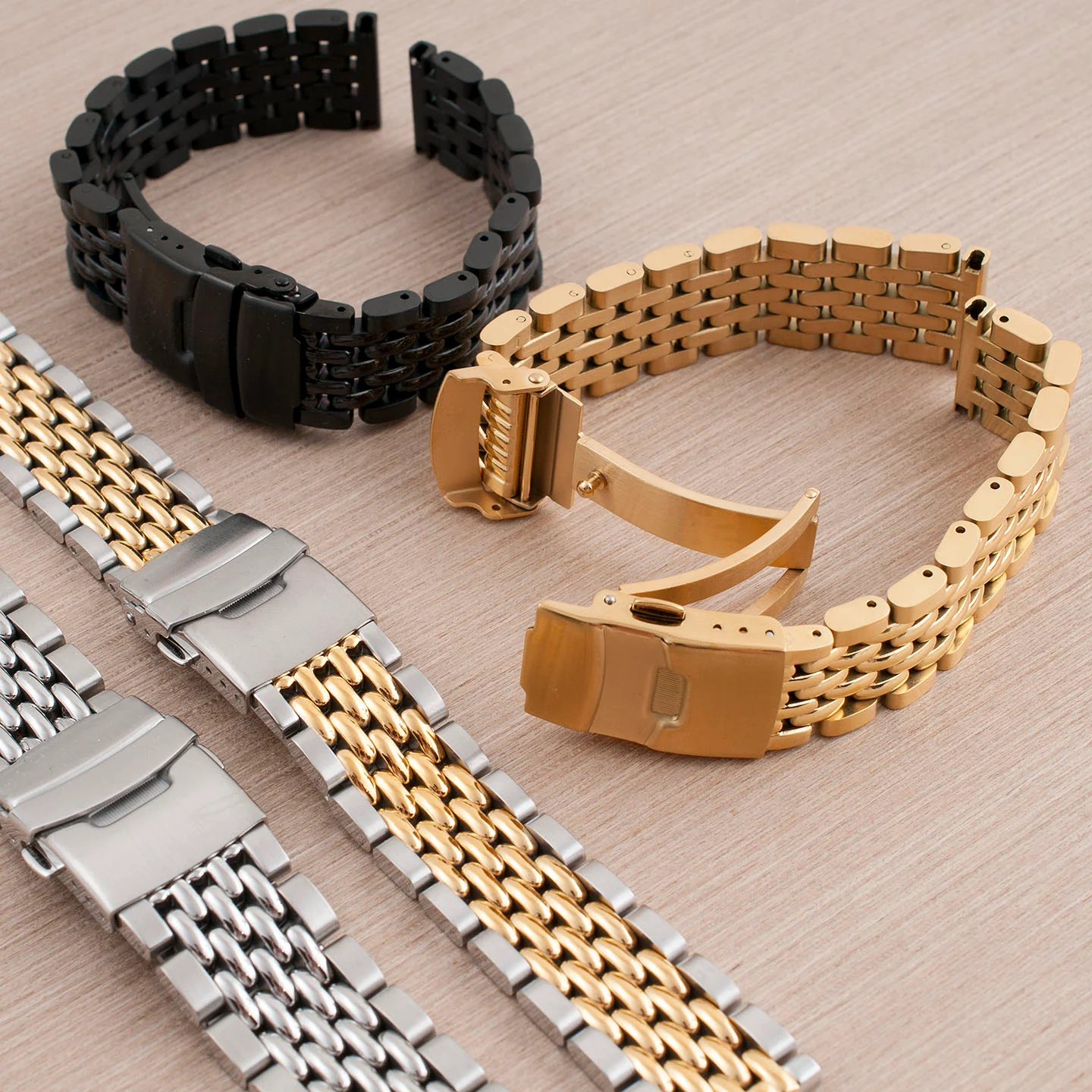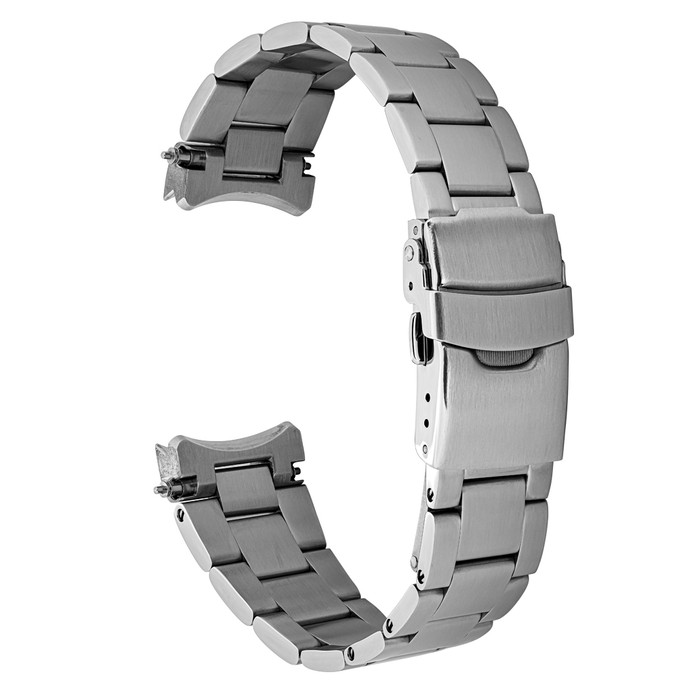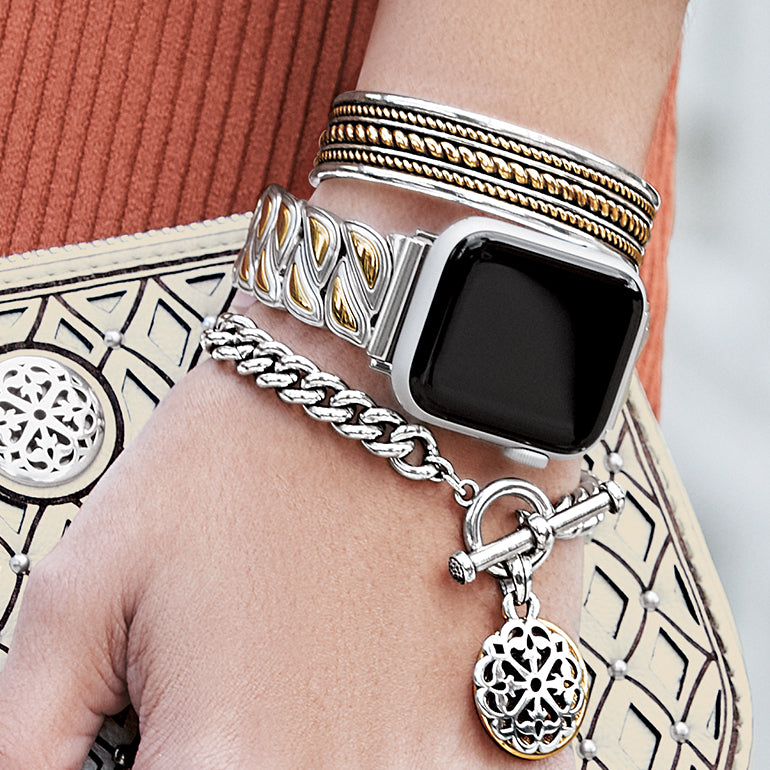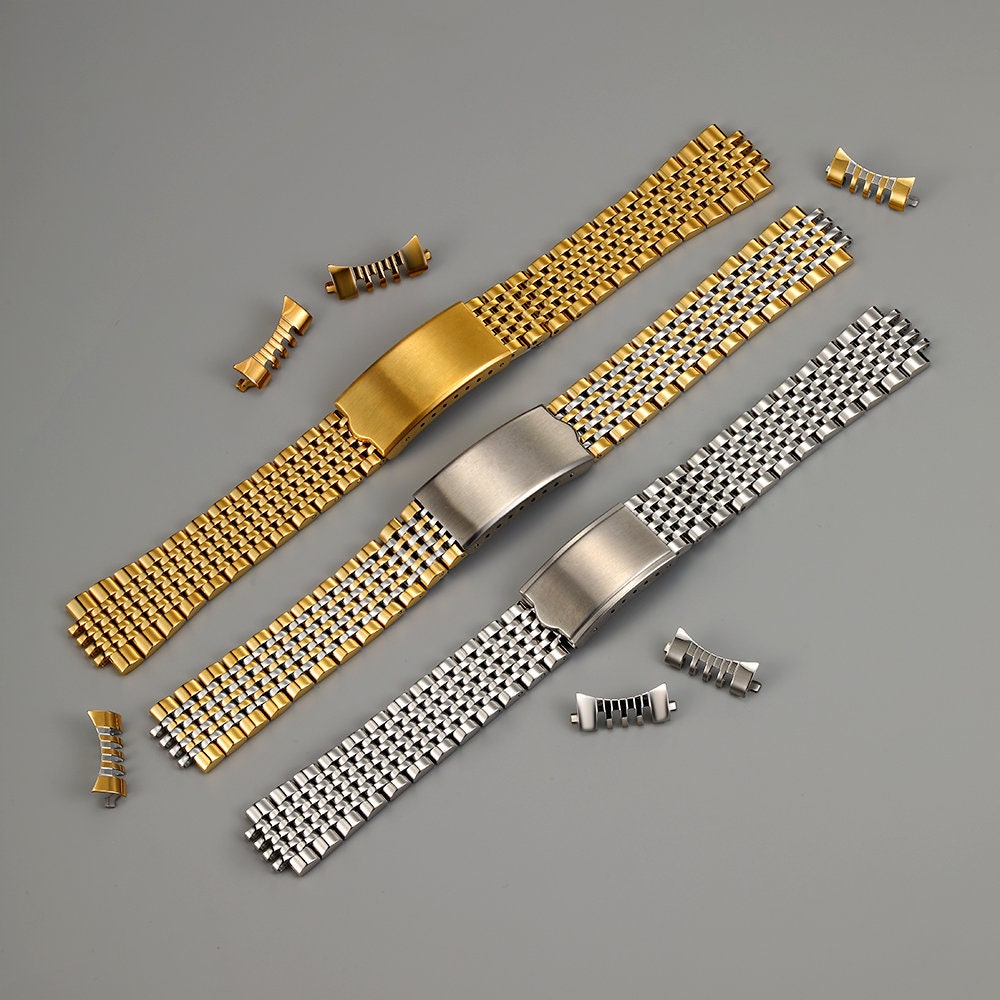Introduction
When it comes to watches, the type of bracelet that comes with it can make a huge difference in the overall style and functionality of the timepiece. Watch bracelets come in a variety of materials, styles, and designs, each offering its own unique benefits and drawbacks. In this comprehensive guide, we’ll take a deep dive into the world of watch bracelets, discussing the different types available, how to choose the right one for your watch, and how to care for and maintain them for years to come.
Part 1: Popular Types of Watch Bracelets
Metal Bracelets
Metal bracelets are one of the most common types of watch bracelets, and for good reason. They are durable, versatile, and can fit different wrist sizes. Metal bracelets are stainless steel, titanium, or precious metals like gold or platinum. They are perfect for everyday wear and can complement a wide range of watch styles, from sporty to formal.
Leather Straps
Leather watch straps have a timeless and sophisticated appeal. They are often associated with luxury and are a popular choice for dress watches. Leather straps come in various finishes, including smooth, textured, and exotic skins like alligator or ostrich. While leather straps may require more maintenance compared to metal bracelets, they offer a level of comfort and elegance that is unmatched.
Part 2: Choosing the Right Bracelet for Your Watch
Consider the Watch Style
When choosing a bracelet for your watch, it’s crucial to consider the overall style of the timepiece. A sporty dive watch, for example, may look best with a metal bracelet or a rubber strap, while a classic dress watch may be better suited with a leather strap. Consider the case material, dial design, and overall aesthetic of the watch to ensure the bracelet complements the look.
Comfort and Fit
The comfort and fit of the watch bracelet are also important factors to consider. Metal bracelets with adjustable links offer a customized fit, while leather straps may need to be broken in over time. Pay attention to the weight of the bracelet and how it feels on your wrist, as a comfortable fit is essential for long-term wear.
Part 3: Maintaining Your Watch Bracelet
Regular Cleaning
To keep your watch bracelet looking its best, regular cleaning is essential. For metal bracelets, a simple solution of mild soap and water can be used to scrub away dirt and grime, followed by a thorough rinse and dry. Leather straps should be cleaned with a damp cloth and conditioned with a leather conditioner to prevent drying out and cracking.
Avoiding Harsh Chemicals
When cleaning your watch bracelet, it’s important to avoid using harsh chemicals or abrasive cleaners, as these can damage the bracelet’s finish and material. Stick to gentle cleaning methods and avoid exposing the bracelet to chemicals like perfumes, lotions, or hairsprays, which can cause discoloration and deterioration.
Part 4: Upgrading Your Watch Bracelet
Customization Options
If you’re looking to give your watch a new look or upgrade its bracelet, there are many customization options available. From aftermarket metal bracelets to bespoke leather straps, you can find a wide range of choices to match your style preferences. Some companies even offer personalized engraving or embossing for a truly unique and tailored bracelet.
DIY Bracelet Changes
For the more adventurous watch enthusiasts, DIY bracelet changes can be a fun and cost-effective way to change up the look of your watch. Many watches come with interchangeable bracelets or straps, allowing you to easily switch between different styles to suit different occasions. Just be sure to follow the manufacturer’s guidelines for changing bracelets to avoid any potential damage to your watch.
Part 5: The Future of Watch Bracelets
Innovative Materials
As technology and materials continue to advance, we can expect to see innovative materials for watch bracelets in the future. From advanced ceramics to high-tech polymers, these new materials offer benefits such as increased durability, lightness, and resistance to wear and tear. Watch enthusiasts can look forward to a whole new range of bracelet options that combine style and functionality like never before.
Customizable Features
With the rise of personalized and customizable products, watch bracelets are also following suit. Brands are offering more options for customizing bracelets, from choosing different colors and finishes to adding unique embellishments and details. This trend allows watch wearers to express their individuality and create a truly one-of-a-kind timepiece that reflects their personal style.
Part 6: Types of Watch Bracelets
There are several types of watch bracelets, each offering unique styles and features. One of the most common types is the metal bracelet, which can be made of stainless steel, gold, or titanium. Metal bracelets are known for their durability and can lend a sophisticated and professional look to a watch.
Another popular type is the leather strap, which is a classic choice for dress watches. Leather straps come in a variety of colors and textures, such as crocodile, alligator, or calfskin, allowing for customization and personalization.
Rubber straps are another option, offering a more casual and sporty feel. These straps are water-resistant and are suitable for diving or sports watches. They are also lightweight and comfortable to wear.
NATO straps are a popular option for a more casual and laid-back look. NATO straps come in a wide range of colors and patterns.
Finally, there are also exotic and unique materials such as ceramic, wood, or fabric straps that offer a distinctive and eye-catching look. These materials can add a touch of personality and individuality to a watch.
When choosing a watch bracelet, it is essential to consider the overall style and purpose of the watch. Different bracelets can enhance or complement the watch’s design and can greatly impact its overall appearance.
Part 7: Customizing Your Watch Bracelet
One of the advantages of watch bracelets is that they can be easily customized to reflect your personal style and preferences. With the right tools and know-how, you can easily switch out your watch bracelet to create a new look for your timepiece.
One way to customize your watch bracelet is by changing the material. For example, if your watch originally came with a metal bracelet, you can switch it out for a leather strap to give it a more casual and modern feel. Conversely, if your watch came with a leather strap, you can opt for a metal bracelet for a more formal and classic look.
Another way to personalize your watch bracelet is by changing the color or pattern. Many watch manufacturers offer a range of colors and patterns for their bracelets, allowing you to mix and match to create a unique and eye-catching combination.
You can also customize the fit of your watch bracelet by adding or removing links or adjusting the buckle for a perfect fit. This can greatly improve the comfort and wearability of your watch.
Additionally, some watch bracelets come with quick-release mechanisms that allow for easy swapping of bracelets without the need for tools. This makes it convenient to switch out your bracelet to match your outfit or mood.
Overall, customizing your watch bracelet is a great way to make your watch truly your own and to ensure that it reflects your personality and style.
Part 8: Maintaining Your Watch Bracelet
Proper maintenance of your watch bracelet is essential to ensure its longevity and to keep it looking its best. Different types of watch bracelets require different care and attention, so it’s important to familiarize yourself with the specific needs of your bracelet.
For metal bracelets, regular cleaning with a soft brush and mild soap can help remove dirt and grime, while polishing can restore its shine. Gold bracelets may require special care to prevent scratching. Using leather conditioner can help keep the strap supple and prevent it from cracking or fading.
Rubber straps are easy to clean with a damp cloth and mild soap, and they are resistant to water and sweat. However, prolonged exposure to sunlight or extreme heat can cause the rubber to degrade, so it’s best to store them in a cool, dark place when not in use. Nylon NATO straps are also easy to clean and maintain, and they are resistant to water and mildew.
Overall, regular maintenance and care can help keep your watch bracelet looking great and functioning properly for years to come. By following the manufacturer’s recommendations and keeping your bracelet clean and well-maintained, you can enjoy your watch for a long time.
Conclusion
A watch bracelet is more than just a functional component of a timepiece; it’s a statement of style, comfort, and personal expression. With a variety of materials, styles, and customization options available, there’s a bracelet out there for every type of watch and wearer. By understanding the different types of watch bracelets, how to choose the right one for your watch, and how to care for and maintain it, you can ensure that your timepiece remains a cherished accessory for years to come.
Tags: personal expression, stainless steel, watch bracelets


